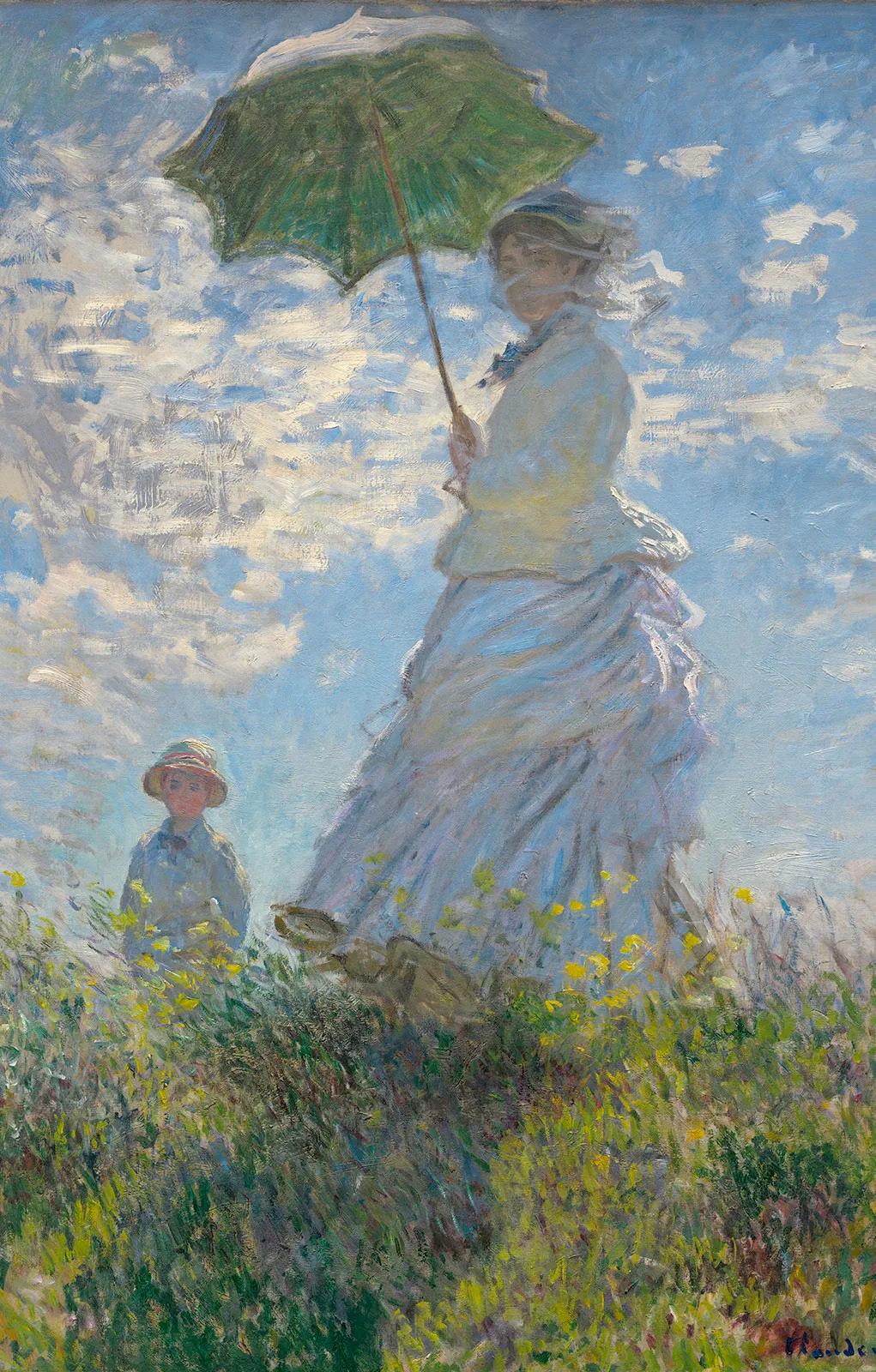Adventures!
REBECCA PHILLIPS, conductor
VIET CUONG Moth (2013)
PERCY ALDRIDGE GRAINGER Molly on the Shore (1920)
JOHN CORIGLIANO
Gazebo Dances (1972/1974/1978)
I. Overture
II. Waltz
III. Adagio
IV. Tarantella
OTTORINO RESPIGHI
Transcribed by Yoshihiro Kimura (mvts. I & IV) and Guy Duker (mvts. II & III)
The Pines of Rome (1924/1974/1995)
I. The Pines of the Villa Borghese
II. The Pines Near a Catacomb
III. The Pines of the Janiculum
IV. The Pines of the Appian Way
THURSDAY EVENING, OCTOBER 5, 2023 AT 7:30
NOTES ON THE PROGRAM
Moth (2013)
VIET CUONG
Born: 8 September 1990, West Hills, California
Currently resides in Las Vegas, Nevada
Duration: 9 minutes
Viet Cuong is an award–winning American composer whose eclectic sound has been described as “alluring” and “wildly inventive” by The New York Times. His music has been commissioned and performed on six continents by internationally acclaimed ensembles, including the New York Philharmonic, Eighth Blackbird (Chicago, Illinois), the Saint Paul Chamber Orchestra (St. Paul, Minnesota), the Atlanta Symphony, the United States Navy Band (Washington, D.C.), and the Dallas Winds, among many others. At age thirty-three, Cuong is lauded as a leading contemporary composer and has amassed numerous accolades, having most recently won the 2023 ASCAP/CBDNA Frederick Fennell Prize for Vital Sines (2022). Cuong holds degrees from Princeton University (MFA/PhD), the Curtis Institute of Music (AD), and Peabody Conservatory (BM/MM). He currently serves as Assistant Professor of Music Composition at the University of Nevada, Las Vegas.
Of his piece, the composer writes:
The “moth to the flame” narrative is a familiar one. We have all seen moths in the glow of flames or stadium lights. Scientists call this phenomenon “phototaxis,” but I prefer to think of this attraction in much more romantic terms. The dusty moth, though destined to live in shadow, has an insatiable craving for the brightness of day. Drab, but elegant, nervous, but swift, his taste for the glow of the flame or the filament is dire. Perhaps he dances in the light because it holds the promise that he might be as beautiful as his favored kin, the butterfly. For only there, in its ecstatic warmth, may he spend the last of his fleeting life, and believe himself to be.
Moth seeks inspiration from the dualities between light and dark, beautiful and grotesque, reality and fantasy, and the ultimate decision to sacrifice sensibility for grace.
— program notes by Benjamin Pouncey
Molly on the Shore (1920)
PERCY GRAINGER
Born: 8 July 1882, Brighton, Victoria, Australia
Died: 20 February 1961, White Plains, New York
Duration: 4 minutes
Grainger began his sketches for “Molly on the Shore” in June of 1907. In a letter to Karen Holten he says, “I have such a terrible desire to compose these days, but I don’t dare. I have begun a setting of 2 Irish folk dances (something like Green Bushes) for chamber music. Both songs are used for one piece.” The melodies to which Grainger refers are “Temple Hill” and “Molly on the Shore,” both of which are Cork reels taken from The Complete Petrie Collection of Ancient Irish Music. One of Grainger’s unique talents was his ability to combine different folk melodies with his own original material in a manner that was both seamless and seemingly predetermined, and Molly on the Shore is one the finest examples of this technique.
The work was originally scored for string quartet and presented to Grainger’s mother as a birthday present on July 3, 1907. The composer published a version for orchestra in 1914, dished it up for piano in 1918, and created a band setting in 1920. Although he based the band version on his orchestral setting, he did make a few adjustments, such as raising the entire work a half-step to the key of A-flat, including additional percussion instruments, and adding material that did not exist in any previous arrangement. It was one of the last band settings Grainger undertook while still a member of the U.S. Army Band stationed at Fort Hamilton, a position that allowed him to refine his technique of scoring for band.
— program note by the “The President’s Own” United States Marine Band
Gazebo Dances (1972/1974/1978)
JOHN CORIGLIANO
Born: 16 February 1938, New York, New York
Currently resides in New York, New York
Duration: 16 minutes
John Corigliano is an American composer who draws from “eclectic influences to create music that was generally tonal, accessible, and often highly expressive,” (Alicja Zelazko, Encyclopedia Britannica). Corigliano, who composed works for multiple genres, won the 2001 Pulitzer Prize in Music for his Symphony No. 2 for String Orchestra. His third
film score, The Red Violin, won an Academy Award in 2000. Besides his many awardwinning compositions, Corigliano taught at the Juilliard School and several of his students have gone on to prestigious careers in composition, including Eric Whitacre, John Mackey, James Bonney, and Steven Bryant.
Of his work, the composer writes:
Gazebo Dances was originally written as a set of four-hand pieces dedicated to certain of my pianist friends. I later arranged the suite for orchestra and for concert band, and it is from the latter version that the title is drawn. The title Gazebo Dances was suggested by the pavilions often seen on village greens in towns throughout the countryside, where public band concerts were given on summer evenings. The delights of that sort of entertainment are portrayed in this set of dances, which begins with a Rossini-like overture, followed by a rather peg-legged waltz, a long-lined adagio and a bouncy tarantella.
Each movement was given a dedication, as follows:
I - for Rose Corigilano (composer’s mother) and Etta Feinbert (composer’s mother’s best friend)
II - for John Ardoin (music critic for the Dallas Morning News and author)
III - for Heida Hermanns (composer’s father’s accompanist)
IV - for Jack Romann (head of Baldwin pianos and close friend) and Christian Steiner (photographer)
– program note by the composer
The Pines of Rome (1924/1974/1995)
OTTORINO RESPIGHI
Transcribed by Yoshihiro Kimura (mvts. I & IV) and Guy Duker (mvts. II & III)
Born: 9 July 1879, Bologna, Italy
Died: 18 April 1936, Rome, Italy
Duration: 21 minutes
While musicians and composers the world over have made pilgrimages to study music in Italy, Ottorino Respighi sought to leave his native country and, in 1900, traveled to Russia where he played first viola in the orchestra of the Imperial Theater in St. Petersburg. While
there, he took lessons in composition and orchestration with Nicolai Rimsky-Korsakov, the acknowledged master of orchestration and tonal color at that time and still hailed as among the most influential composers of the nineteenth century. One year later, he travelled to Berlin for additional study with Max Bruch.
From 1903 to 1908 Respighi was active as a violinist and violist in chamber music and worked as a pianist at a singing academy. His compositions began to attract attention and, following the success of two of his operas in hometown productions, he was appointed professor of composition at the Conservatory of Santa Cecilia in Rome in 1913. He continued to teach there for ten years and was appointed director of the conservatory in 1924 but resigned in 1926 to pursue composing on a full-time basis and conducting his own music with various orchestras.
Respighi has been hailed as the greatest composer of orchestral tone poems since Franz Liszt and a master of orchestral color rivaling that of his teacher Nicolai Rimsky-Korsakov and the French impressionist Claude Debussy, although the sheer weight and volume of his massive orchestra tone poems lean more toward the Russian master. Respighi was clearly in the camp of the late Romantic composers and reveled in the lush orchestral textures which he manipulated with consummate skill, leading also to a comparison with Richard Strauss. In addition to his Roman Trilogy comprised of The Fountains of Rome (1914–16), The Pines of Rome (1923–24), and Roman Festivals (1928), he composed nine operas, three ballets, and a number of transcriptions of music by other composers. He also studied and edited a great deal of early music, including the compositions of Claudio Monteverdi. His transcriptions show incredible skill and artistry, from his adaptations of music of Johann Sebastian Bach for full orchestra to those of Gioachino Rossini and other old masters.
Respighi composed his one original work for band, Huntingtower Ballad, in 1932 in memory of John Philip Sousa. The work was given its world première on April 17, 1932, by the United States Marine Band conducted by Director Captain Taylor Branson at the annual convention of the American Bandmasters Association (ABA). Amazingly, the Marine Band also premièred Gustav Holst’s Hammersmith and a lesser known work, Skyward, by Nathaniel Shilkret on the same program. Following the convention, Respighi was made an honorary member of the ABA. With his active interest in transcriptions, it is tragic that Respighi did not make band setting of his own works, for it is known that band versions were performed within his lifetime. The Sousa Band is known to have performed The Pines of Rome among its large-scale repertory for concert band. Whether Sousa himself prepared his transcription is a matter of some speculation because the scores have been lost.
The Pines of Rome is the second work in the Roman Trilogy and was composed as a companion piece to the earlier The Fountains of Rome. The Pines of Rome was completed
in 1924 and premièred on December 14 of that year at a concert in the Augusteo in Rome under the direction of Bernardino Molinari. It received its American première by the New York Philharmonic under Arturo Toscanini on January 14, 1926. Lawrence Gilman, the program annotator for this concert, wrote:
While in his preceding work The Fountains of Rome, the composer sought to reproduce by means of tone and impression of nature; in The Pines of Rome, he uses nature as a point of departure, in order to recall memories and visions. The century-old trees which so characteristically dominate the Roman landscape become witnesses to the principal events in Roman life.
Respighi was daring in his use of orchestral effects, predicting that audiences might have difficulty accepting what he had written. Concerning the end of the first movement, he told his wife: “You’ll see that the first part won’t have a smooth passage and they’ll boo!” When a friend suggested an alternate ending for the movement, Respighi responded: “Let them boo, what do I care?” But the most striking and controversial effect in the entire work was the use of a phonograph record of a nightingale in the third movement, “The Pines of Janiculum.” It was the first time a recording had been introduced into a concert work and opinions were mixed about the advisability of doing so.
Where other composers had been content to simulate bird-like sounds with orchestra effects, Respighi apparently had a specific sound in mind, perhaps a memory from his own experience, and felt that nothing else would suffice. Once audiences became accustomed to the idea, it was expected and even anticipated eagerly. Another unique effect is the introduction of offstage trumpets and trombones in “The Pines of the Appian Way” to simulate the sound of buccine, the crude cylindrical trumpets used in Rome during the fourth century. The buccine were up to eleven feet long and were associated with high-ranking military personnel. They had a gently flaring bore and small bell, coiled in a shape similar to the Arabic numeral six so that the player could manage its length and still have the sound project forward.
Any concerns about the reaction of the audience were unfounded. After the American première, Respighi’s wife Elsa wrote:
Toscanini was given a great ovation for each item in the program but after The Pines of Rome the applause was almost delirious. He had acknowledged the audience five or six times, and I was about to leave the box when a tremendous roar made me turn around in alarm. The whole audience was standing, the orchestra sounding the “salute of honor,” and Ottorino, next to Toscanini, was bowing his thanks.
Respighi conducted The Pines himself the next day in Philadelphia with the Philadelphia Orchestra. Elsa Respighi commented: “The Philadelphia Orchestra had gone en masse to New York to hear The Pines conducted by Toscanini, and all the musicians came back eager and determined to give, if possible, an even better performance.” Respighi conducted the concert in Philadelphia to great acclaim and then he and the orchestra took the program on a short tour, which included Washington, Baltimore, and Cleveland.
The composer provided his own detailed notes for each of the four connected sections of The Pines of Rome:
1. In “The Pines of the Villa Borghese,” children are at play in the pine grove of the Villa Borghese, dancing the Italian equivalent of “Ring around a Rosy;” mimicking marching soldiers and battles; twittering and shrieking like swallows at evening; and they disappear. Suddenly the scene changes to—
2. The Pines Near a Catacomb. In this portion, we see the shadow of the pines, which overhang the entrance of a catacomb. From the depths rises a chant, which re-echoes solemnly, like a hymn, and then is mysteriously silenced.
3. In “The Pines of the Janiculum,” there is a thrill in the air. The full moon reveals the profile of the pines of Gianicolo’s Hill. A nightingale sings.
4. The Pines of the Appian Way begin with a misty dawn on the Appian Way. The tragic country is guarded by solitary pines. Indistinctly, incessantly, the rhythm of innumerable steps. To the poet’s fantasy appears a vision of past glories; trumpets blare, and the army of the Consul advances brilliantly in the grandeur of a newly risen sun toward the Sacred Way, mounting in triumph the Capitoline Hill.
– program note by the “The President’s Own” United States Marine Band
COLORADO STATE UNIVERSITY WIND SYMPHONY
Piccolo/Flute Madrigal Frederick-Law Greeley, CO Junior BA Music/BA Art History Lucy McCrossan Simi Valley, CA Junior BM Music Education *Jenna Moore Longmont, CO Graduate Student MM Perf/MA Lead and Cultural Mgmt Ella Patterson Longmont, CO Sophomore BM Performance Karin Sotillo Denver, CO Freshman BM Performance Oboe Pablo Hernandez Fort Collins, CO Guest Artist *Jacquelyn Olivera Ashburn, VA Senior BM Music Therapy Olivia Zenzinger Arvada, CO Freshman BM Performance Eb/Bb/Alto/Bass/Contra Bass Clarinet Montgomerie Belk Lexington, NC Freshman BM Performance Rachel Bowyer Colorado Springs, CO Junior BM Music Therapy Ethan Coulter Longmont, CO Senior BM Performance Claire Cunningham Maple Valley, WA Senior BM Music Therapy Peter Hansen Elko, NV Graduate Student MM Performance Bradley Irwin Billings, MT Senior BM Music Education Ben Landfair Windsor, CO Senior BM Music Education Raemi Morin Broomfield, CO Senior BM Music Therapy Alfredo Ramirez Bakersfield, CA Graduate Student MM Perf/MA Lead and Cultural Mgmt *Andrew Rutten Kindred, ND Senior BM Performance Miah Tofilo Yauco, PR Junior BS Biology/Music Minor/Chem Minor Kie Watanabe Las Vegas, NV Senior BM Music Therapy Katrina Whitenect Halifax, NS, CA Graduate Student MM Performance Bassoon/Contra Bassoon Charles Beauregard Voorheesville, NY Sophomore BM Perf/BA Creative Writing James Kachline Denver, CO Sophomore BA Music *James Scott Lebanon, OR Graduate Student MM Performance Soprano/Alto/Tenor/Baritone Saxophone Riley Busch Littleton, CO Senior BM Music Education Ethan Dunkerton Colorado Springs, CO Junior BM Music Education *Damian Lesperance Erie, CO Junior BM Jazz Performance James Mepham Great Falls, MT Graduate Student MM Performance Jack Robitaille Casper, WY Senior BM Music Education Horn *Jacob Andersen Richmond, VA Graduate Student MM Performance Leah Dunphey Monument, CO Senior BM Music Education Sophia Marino Boulder, CO Sophomore BM Performance Rachel Richardson Hillsboro, MO Graduate Student MM Performance Erin Wilson Fort Collins, CO Junior BM Performance
Trumpet/Cornet
Enzo Barrett Lafayette, CO Senior BM Perf/Computer Sci Minor Drew Bradley Atlanta, GA Graduate Student MM Performance *Will Hiett Opelika, AL Graduate Student MM Performance Kris Usrey Fort Collins, CO Senior BM Performance/BS Psychology Bryce Wicks Fort Collins, CO Freshman BM Composition Arjen Wynja Lyons, CO Sophomore BM Music Education
Trombone *Christian Heck Sacramento, CA Graduate Student MM Performance Bryce Medlyn Windsor, CO Junior BM Performance & Composition Shae Mitchell Newton, NC Graduate Student MM Performance Andre Ranis Vicksburg, MS Graduate Student MM Performance Euphonium *Joseph Raby Austin, TX Graduate Student MM Performance Tuba Kobe Garrido Westminster, CO Senior BA Political Science *Paul Haarala Summerville, SC Graduate Student MM Music Education Carson Ross Rio Rancho, NM Graduate Student MM Performance Percussion Zayne Clappe Cortez, CO Sophomore BM Performance *Stuart Hoskins Fort Collins, CO Graduate Student MM Performance Paige Lincoln-Rohlfing Santa Barbara, CA Senior BM Perf/BS Biomedical Science Jack Mutschler Appleton, WI Graduate Student MM Performance Jarred Premo Parker, CO Senior BM Performance Noah Roppe Parker, CO Junior BM Performance Jalen Thompson O’Fallon, MO Junior BM Performance & Composition String Bass *Maxwell Williams Fort Collins, CO Sophomore BM Performance Keyboards Laura Kohler Broomfield, CO Freshman BM Performance *Reynaldi Raharja Semarang, Indonesia Senior BA Music Harp *Elisabeth Marsh Fort Collins, CO Sophomore BA Interdisciplinary Liberal Arts
Assistants Christian Heck Sacramento, CA Graduate Student MM Performance Nicholas Hinman Aurora, CO Graduate Student MM Performance James Mepham Great Falls, MT Graduate Student MM Performance *Principal
Trombone/Bass
Graduate
MEET THE CONDUCTOR
Rebecca L. Phillips is Professor of Music and Director of Bands at Colorado State University where she conducts the CSU Wind Symphony and guides all aspects of the band and graduate wind conducting programs. Prior to this appointment, she served as the Associate Director of Bands and Director of Athletic Bands at the University of South Carolina where she was responsible for directing the Symphonic Winds Concert Band, “The Mighty Sound of the Southeast” Carolina Marching Band, “Concocktion” Pep Bands, teaching undergraduate instrumental conducting, and directing the Carolina Summer Drum Major Clinic.
Dr. Phillips has served as guest-conductor, clinician, and performer throughout North America, Europe, and Asia. In Spring 2024, highlights will include guest-conducting the United States Navy Band in Washington, D.C. and the Department of Defense All-Europe High School Honor Band in Frankfurt, Germany. Over the past several years, Dr. Phillips has guestconducted the “The President’s Own” United States Marine Band and both professional and collegiate musicians in Prague (Czech Republic) for the “Prague Multicultural Music Project.”
In addition, she has conducted members of the Prague National Symphony at the inaugural “2017 American Spring Festival” (Prague, Czech Republic). In 2018, she conducted members of the Des Moines Symphony in a chamber concert for the Iowa Bandmasters Association annual conference.

Dr. Phillips regularly conducts intercollegiate and collegiate honor bands, all-state bands, and festival bands across the United States, Canada, and Europe and she has been a rehearsal clinician at the Midwest Clinic: An International Band and Orchestra Conference. Ensembles under her direction have been featured at the 2020 Colorado Music Educators Association Convention, the 2019 American Bandmasters Association National Convention, the 2012 College Band Director’s National Association Southern Division Conference, the 2010 Society of Composers International Conference, and the 2008 North American Saxophone Alliance International Convention.
Dr. Phillips believes in treasuring the traditional wind music of the past as well as promoting cutting edge works of today’s finest composers. She commissioned and conducted world and consortium premieres of works by several leading composers, including William Bolcom, James David, John Mackey, John Fitz Rogers, Adam Silverman, Frank Ticheli, and Dana Wilson to name a few. Her conducting performances of David del Tredici’s In Wartime and John Mackey’s Redline Tango are both featured on the nationally distributed Louisiana State University Wind Ensemble compact disc project and the world premiere of John Fitz Rogers Narragansett is featured on the Compact Disc And I Await, featuring Dr. Phillips as guestconductor of the University of South Carolina Wind Ensemble.
As a trombonist, Dr. Phillips’ performances can be found on several internationally distributed recordings. She has performed with the National Symphony Orchestra, U.S. Army Band (Pershing’s Own), the Tallahassee Symphony, and the Tampa Bay Opera Orchestra. She has also performed internationally in England, Mexico, the Caribbean, Russia, and Sweden, and has toured as a trombonist with Johnny Mathis and Barry Manilow.
A native of the Washington, D.C. area, Dr. Phillips earned her Bachelor of Music Education degree from Florida State University, Master of Music degrees in conducting and trombone performance from the University of South Florida, and Doctor of Musical Arts in conducting at Louisiana State University. She served as a secondary school band director for seven years in Florida, including Director of Bands at Howard W. Blake Performing Arts High School in Tampa, Florida where she developed an award-winning concert band program. Currently, she is the Immediate Past President of the National Band Association, serves on the Board of Directors for the American Bandmasters Association, and she is on the college/university board for the Western International Band Clinic.
COLORADO STATE UNIVERSITY MUSIC APPLIED FACULTY
Violin
Ron Francois
Leslie Stewart
Viola
Margaret Miller
Cello
Romina Monsanto
Bass
Forest Greenough
Guitar
Jeff Laquatra
Flute
Ysmael Reyes
Michelle Stanley
Oboe
Pablo Hernandez
Clarinet
Wesley Ferreira
Sergei Vassiliev
Saxophone
Peter Sommer
Dan Goble
Bassoon
Cayla Bellamy
Trumpet
Stanley Curtis
Horn
John McGuire
Trombone
Drew Leslie
Tuba/Euphonium
Stephen Dombrowski
Percussion
Eric Hollenbeck
Shilo Stroman
Harp
Kathryn Harms
Piano
Bryan Wallick
Tim Burns
Organ
Joel Bacon
Voice
Nicole Asel
Tiffany Blake
John Lindsey
SYMPHONIC BAND CONCERT
THE MUSIC OF NORMAN DELLO JOIO, JULIE GIROUX, AND GEORGE GERSHWIN.


OCTOBER 10, 2023 | 7:30 P.M. GRIFFIN CONCERT HALL
CONDUCTED BY DR. JAYME TAYLOR
CSUARTSTICKETS.COM
Samuel Coleridge-Taylor Ballade in A minor, Op. 33 Pyotr Ilyich Tchaikovsky Symphony No. 5

THURSDAY, OCTOBER 12, 7:30 P.M. | GRIFFIN CONCERT HALL

CSUARTSTICKETS.COM UNIVERSITY
ORCHESTRA
SYMPHONY
CONDUCTED BY RACHEL WADDELL
Your







/csu Member FDIC
Pride Should Go Where You Do. Show your pride year-round with our exclusive CSU Visa® Debit Cards, free with any FNBO Checking Account. Visit us online, or stop by a branch to open your account today. SHOW YOUR CS U RAMS PRIDE.










